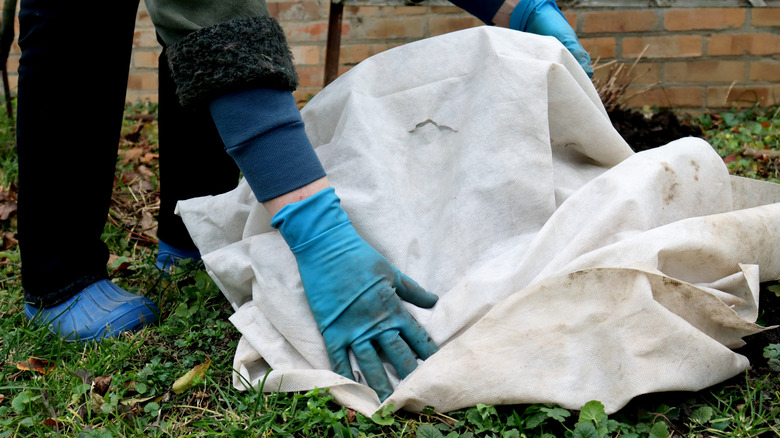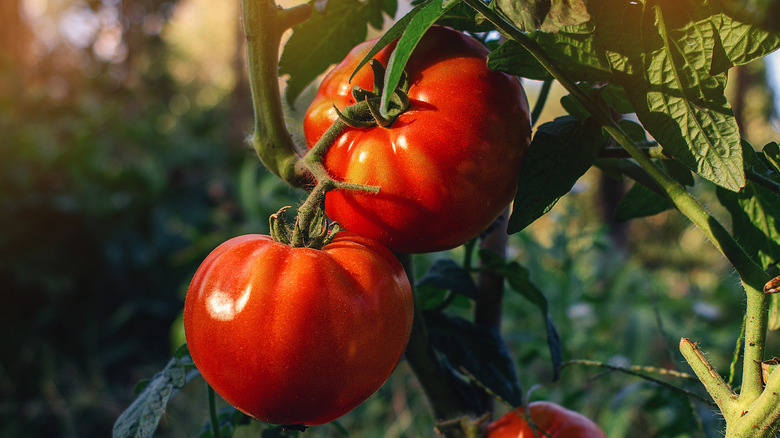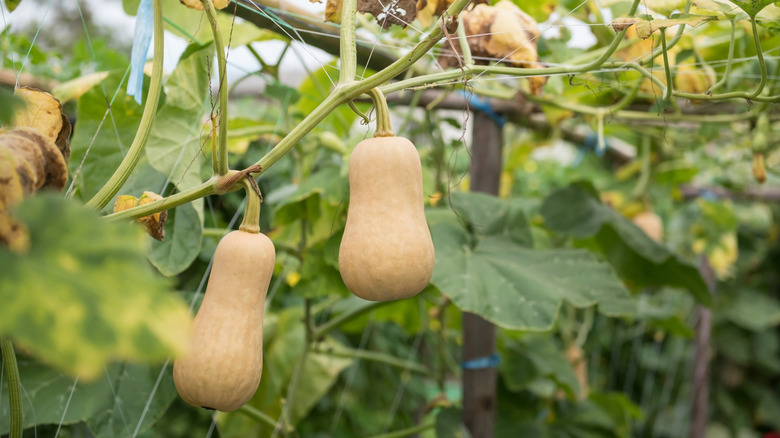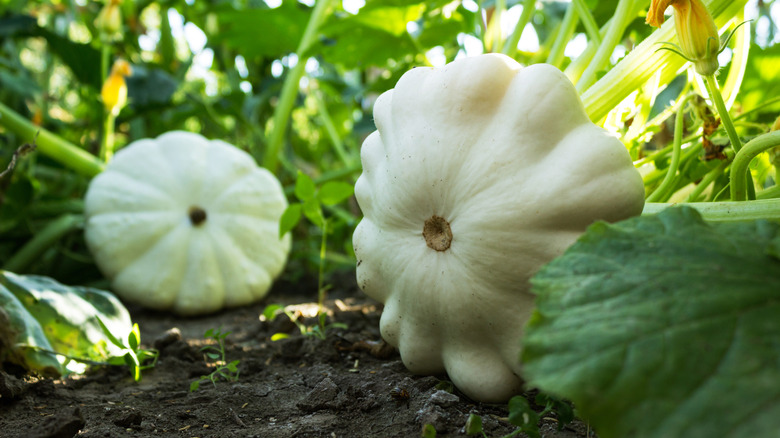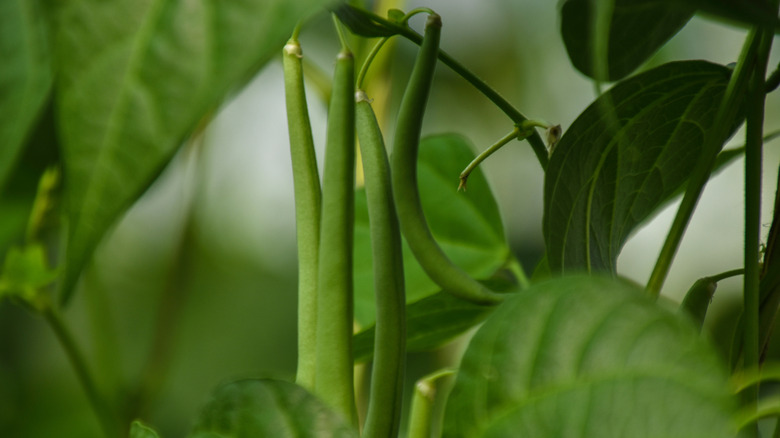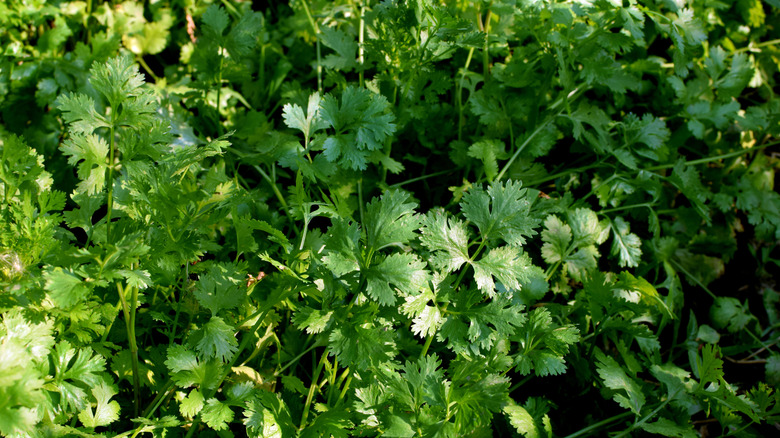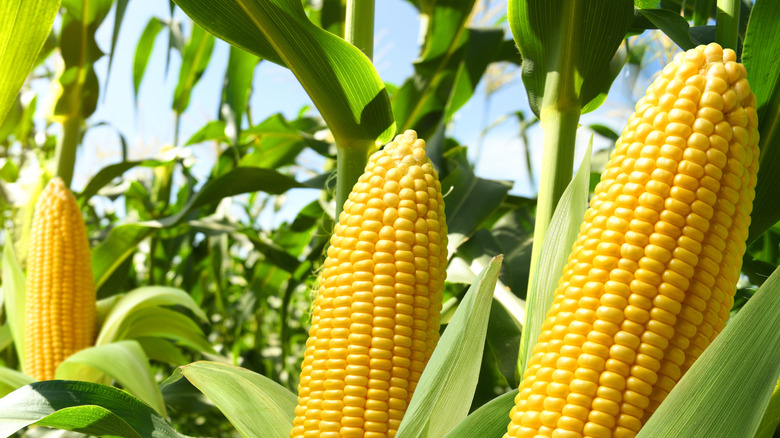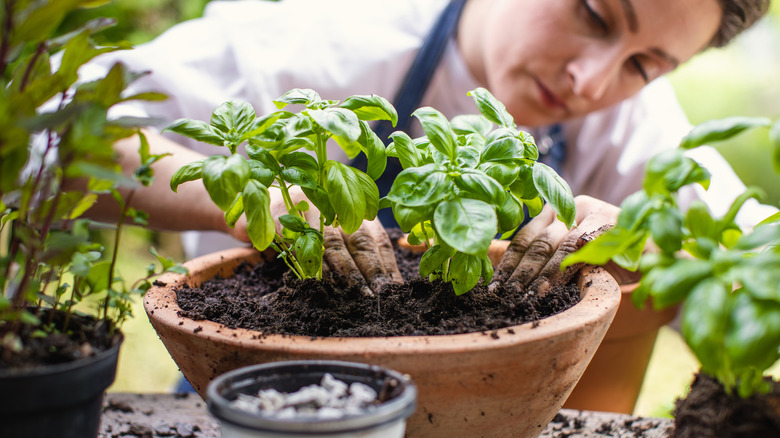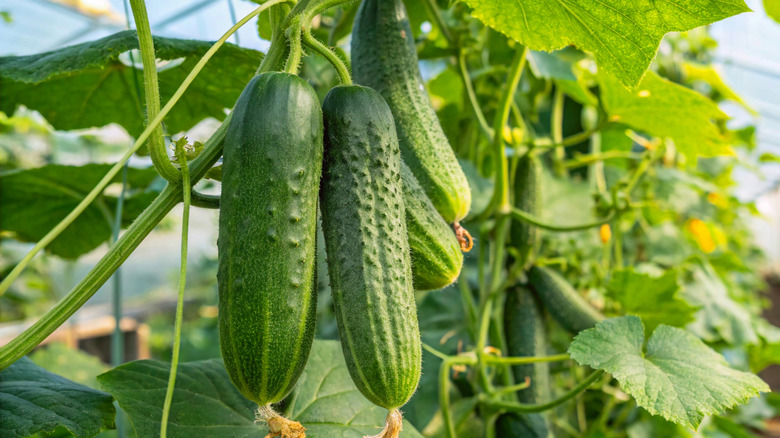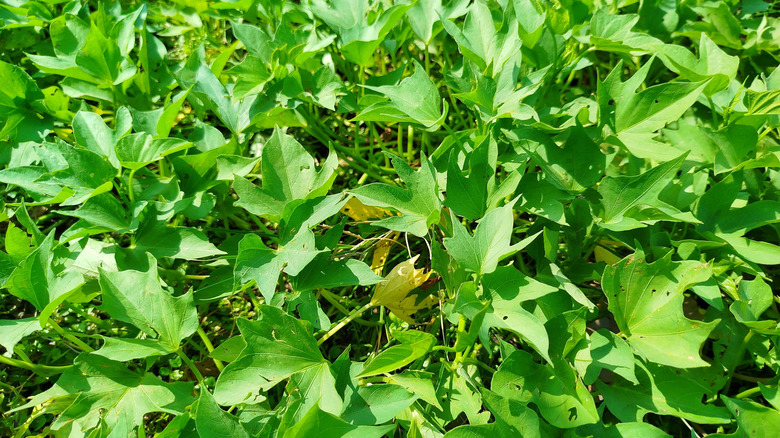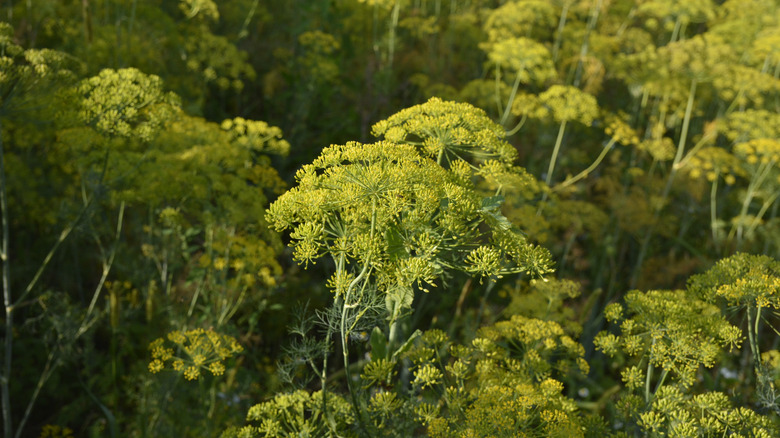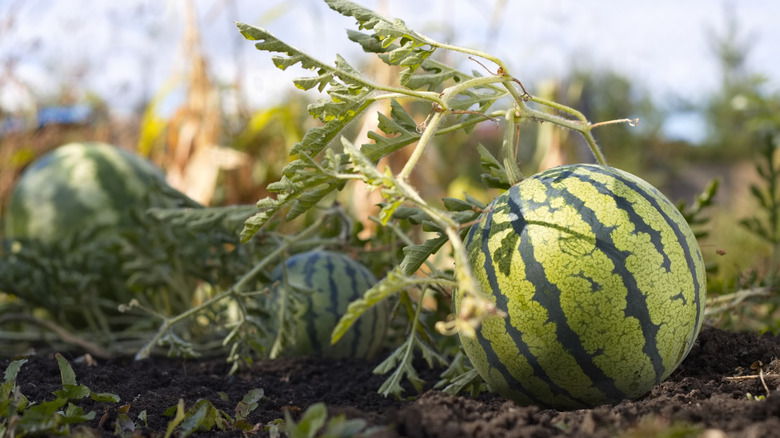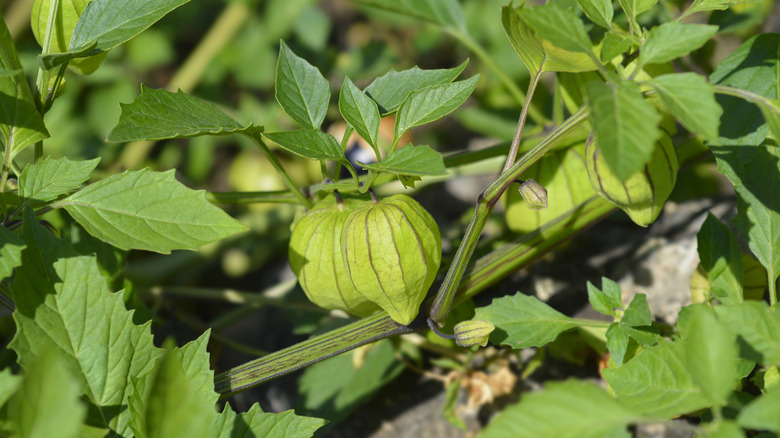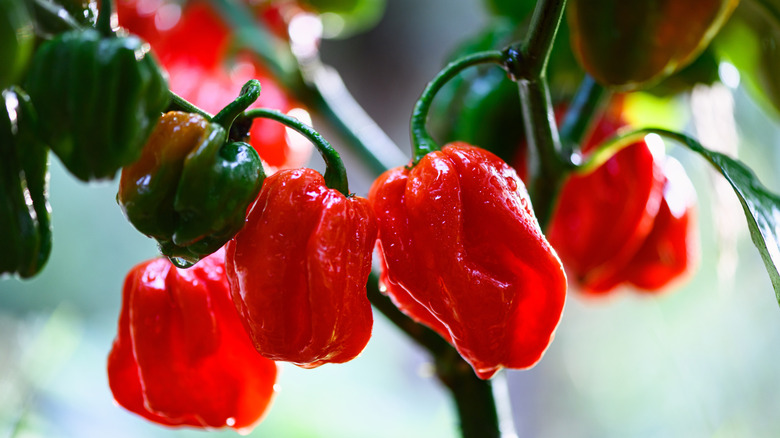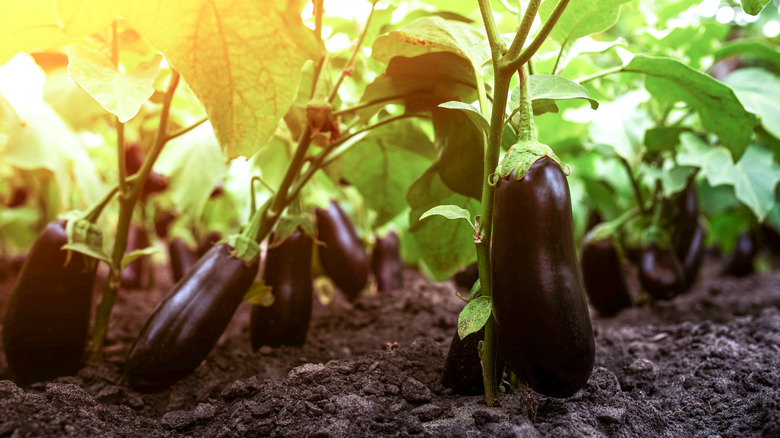Cover These 14 Veggies In October Before Cold Weather Destroys Your Harvest
The theme music crescendoes, and you know the movie credits are about to roll. October in the vegetable garden is like this. Hard-worked and weather-worn vines are laden with produce that's almost ready to pick, but not quite. Another week or so of warm, fall sunshine is all it will take for those winter squash, beans, corn, and tomatoes to be ready to enjoy. Unfortunately, freezing nights are also an impending threat. A frost could put a halt to your tender crops any day now, and covering them at sundown is a simple way to extend the season.
Covering them with sheets, blankets, towels, or specially designed frost blankets is an effective way to protect your outdoor plants from frost. There are plenty of plants that can weather a chill, but many fall favorites are too tender for a freeze. If you're waiting on any of these 14 vegetables that need a bit of help through cold nights, gather up some old bedsheets to have on the ready so that you can make the most of your months of hard work. If nighttime breezes are a concern, also grab some rocks or jugs of water to weigh down the covers' edges. A few clothespins can secure sheets around plants growing on supports.
Tomatoes
Your carefully-tended tomato plants are heavy with green fruit, not quite showing off a hint of blush. Tomatoes are notoriously frost-sensitive plants, so when a frost is on the forecast, err on the side of caution and pick the green tomatoes anyway. It's not hard to ripen green tomatoes once they're off the vine. In fact, sunlight might actually slow their ripening. However, tucking them in under a covering for the night will extend the season, especially if you'd like to grow tomatoes indoors and don't have time to move them inside right away.
Winter squash
The sight of dark, droopy winter squash leaves dangling from thick stems is a kind of heartbreak only known to gardeners. Winter squash takes what feels like an eternity to mature, so a bit of frost insurance is crucial for many places with limited growing seasons. Winter squash, including pumpkins, can handle a light frost, but a hard freeze will do your crops in. Just in case, cover them if you suspect any level of frost is coming your way.
Summer squash
As the name implies, summer squash plants thrive in warm weather and die off once freezing temperatures arrive. Zucchini, yellow squash, pattypan, crookneck, chayotes, and luffas are all susceptible to a frost-induced death; even a light frost can do them in. If your area has a chill coming, first pick any mature fruit, then loosely cover the plants with sheets or blankets. Don't forget to pick the flowers, too. They are as edible as they are lovely!
Beans
It's a must to cover most of the bean plants in your garden once a frost is on the way. Bush and pole beans need shelter, as do limas, edamame, and shelling beans. Broad beans (favas) can manage in slightly cooler temperatures, but to be safe, set up some floating row covers over them. A hoop house is a smart installation, but if that's too much of an undertaking, push some supports or long stakes into the soil around the plants to elevate the cover and keep it from touching the plants.
Cilantro
Cilantro, a staple in hot-climate dishes from Mexico, India, and Thailand, can actually handle a light frost. However, it's best to start insulating your cilantro plants once nighttime temperatures hover around 50 degrees Fahrenheit. Water and mulch your plants before an expected frost, and cover them with a sheet or cloche for extra protection. But why keep your cilantro in suboptimal conditions when you can bring it inside? Repot your cilantro, and place it in a window with bright, indirect light. Keep the soil moist. In northern areas, a grow light might be necessary.
Corn
Corn stalks swaying under the weight of ears are not going to make it through a cold snap. Before covering your corn plants, water the roots well and cover the area with mulch to retain heat and moisture. A floating cover is best for corn, and since the plants are too tall for many hoop houses, stakes that are a good deal longer than the stalks are tall will work. Sink the stakes around and among the corn, drape a thick blanket over the supports, and anchor the blanket's edges with rocks or other heavy items.
Basil
Delicate, fragrant basil leaves are quickly zapped by the cold, even before a frost hits. Your sensitive plants can take a fatal beating at 38 degrees, so watch the forecast carefully. Cloches make good protection for small basil plants, but you can cover larger plants with sheets. You can also dig up planted basil to bring indoors rather than gamble with the cold. Before nights are 55 degrees Fahrenheit, repot your plants in fresh soil, bring them inside, and keep them in bright light–a grow light helps if you don't have a sunny window.
Cucumbers
Maturing cucumbers like consistent temperatures, and that's one thing fall doesn't give a lot of us. Forget about a frost and preempt the cold by setting up row covers for your cucumbers well before a mercury plunge. Cucumbers begin to suffer at around 50 degrees Fahrenheit and lower, so maintaining cover for them in the fall is wise. Once you suspect a frost is nigh, pick any mature cukes and water the plants well before covering them.
Sweet potatoes
One of the downsides of planting sweet potatoes in your garden is their intolerance to cold. Originating in the tropics and subtropics, sweet potatoes are ill-equipped for a chill. As you'd expect from a warm-weather crop, your growing sweet potatoes will need protection from cool fall nights long before a frost is expected. Prevent your sweet potatoes from feeling temperatures below 65 degrees Fahrenheit by setting up row covers well before nights dip below freezing.
Dill
Dill is hardier than most garden herbs. It can withstand frosts and even occasional frigid periods as cold as 10 degrees Fahrenheit. But beyond a short freezing spell, it's toast. If you want to keep your dill producing feathery fronds past a real cold spell, you'll need to cover it, along with a few other helpful tasks. Give it plenty of water, and mulch the base of your dill plants to insulate them and hold in moisture. Then cover the plants with a cloche or a cloth during the freeze.
Melons
No type of melon is going to make it through a temperature plummet below freezing, but some varieties are even more sensitive to the cold than others. Watermelon and honeydew are particularly wimpy when it comes to nippy weather. Floating row covers are a good choice for extending your melon harvest time and holding in warmth in the fall. If you're growing your melons vertically, drape a cover over the plants' support structure, and weigh the edges down to protect them from wind.
Tomatillos
Tomatillos are a sun-hungry plant that can handle the summer heat, but a frost is their mortal enemy. However, there are a few more durable varieties that can handle a nip of frost. Also, if you experience mild winters without prolonged freezing temperatures, you may be able to coax them into surviving the winter. To be safe, cover them once you think frost is coming, or dig them up and bring them indoors.
Peppers
Pepper plants, whether hot or sweet, like equally hot weather, so frosts will put paid to your pepper season without some extra care. Hoop houses are often used to protect commercial pepper crops, and they work wonders for home gardening, too. Save your peppers with this DIY frost cover that adjusts to all of your gardening needs, or if your schedule is too packed for a project, cover the plants with a blanket. You can also dig up pepper plants to overwinter indoors, as long as you do this about two weeks before you expect frost.
Eggplant
Frost will do in eggplants in the blink of an eye, and cold temperatures in the fall can slow their production. Floating row covers are smart structures for protecting eggplants from the cold, but you can also take other steps to eke out as much life as possible from your plants. When nights cool to around 50 degrees Fahrenheit, add some mulch around the base to hold in heat, and if you have cloches tall enough for your plants, use them to seal in some extra warmth.
